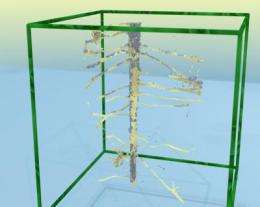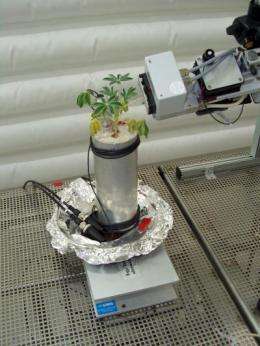When roots lose contact

Plant roots can shrink as a result of water deficit and lose contact with the surrounding soil. This effect has been suspected for a long time, but has only now been demonstrated for a fact with the help of x-ray tomography. The formation of an air gap could initially help plants prevent impending water losses when the soil dries out, say scientists from the Helmholtz Centre for Environmental Research (UFZ) writing in the Vadose Zone Journal.
For their study, the researchers investigated roots of the white lupin (Lupinus albus L.) in sandy soil for a month, examining changes to the soil-root interface as the soil dried out and was irrigated, using x-ray tomography. Their research uncovered air gaps that formed as a result of root shrinkage during dry periods. "These interactions between soil structure and biological activity make the soil-root interface a complex and dynamic biomaterial whose importance has just begun to be understood," explains Dr. Andrea Carminati of the UFZ.

After irrigation, the roots in the experiment swelled, partially refilling the air gaps, but contact in the older part of the taproot was not fully re-established. Does this mean that severe drought can permanently impair the contact between roots and the soil, thereby reducing a plant's uptake of water and nutrients? Or can the plants re-establish the contact? These questions are of great significance for agriculture, in view of climate change and the drier summers that are expected in the north-east of Germany. This is why the soil researchers at the UFZ intend to continue with their x-ray investigations of plant root interactions.
More information: Carminati, A., Vetterlein, D., Weller, U., Vogel, H. J., Oswald, S. E. (2009): When roots lose contact
Vadose Zone J. 8 (2), 805-809; dx.doi.org/10.2136/vzj2008.0147
Source: Helmholtz Association of German Research Centres (news : web)
















